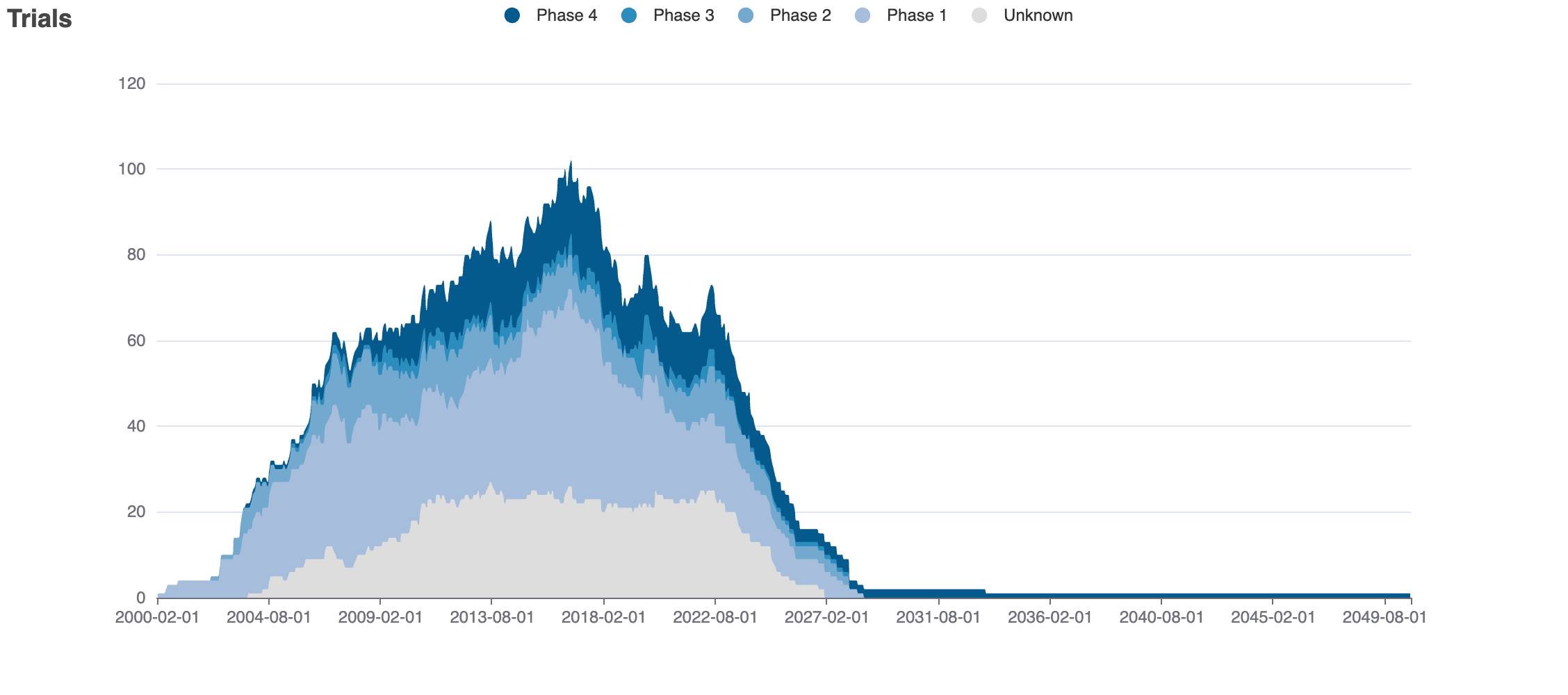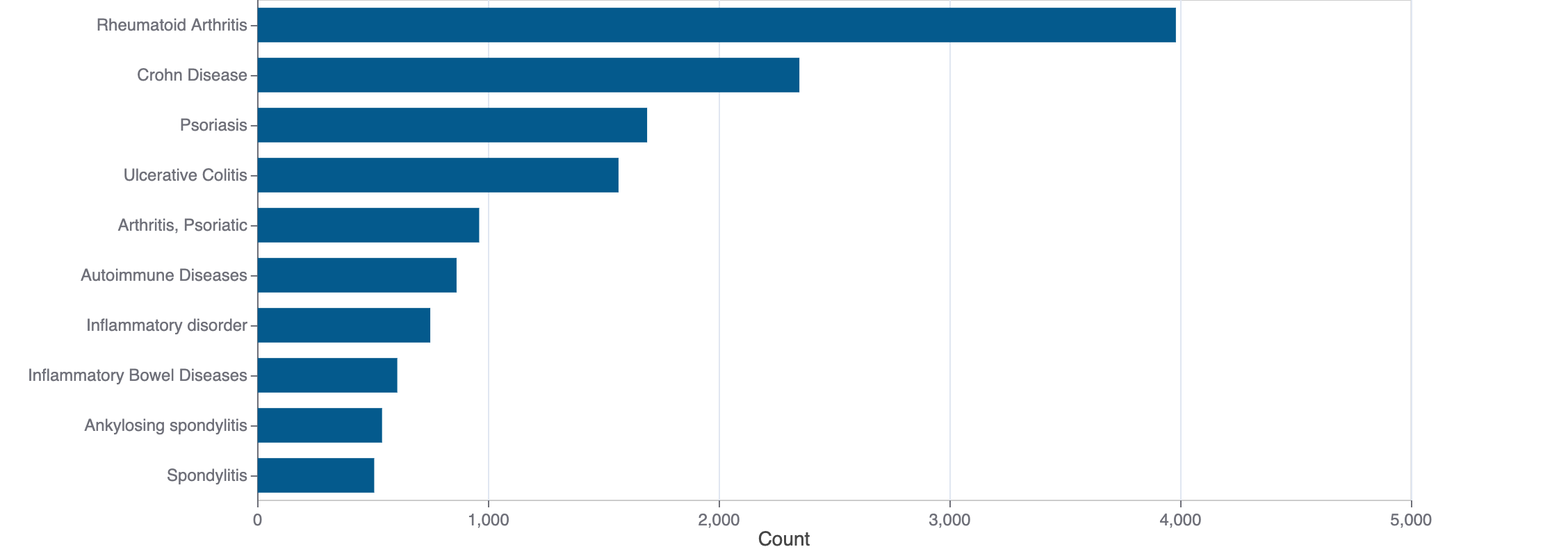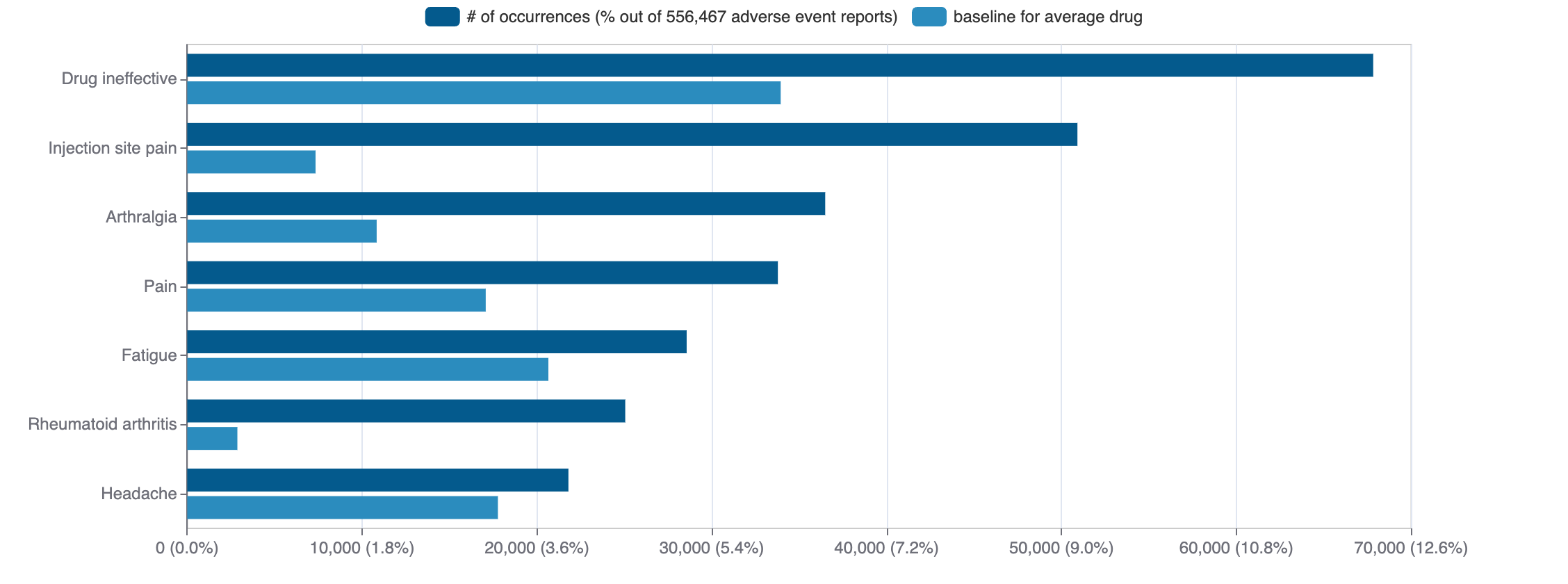Amiloride
Hydro-ride, Midamor, Moduretic (amiloride) is a small molecule pharmaceutical. Amiloride was first approved as Midamor on 1982-01-01. It is used to treat ascites, cystic fibrosis, edema, heart failure, and hypertension amongst others in the USA. It is known to target sodium/hydrogen exchanger 5, acid-sensing ion channel 1, transient receptor potential cation channel subfamily V member 2, acid-sensing ion channel 3, acid-sensing ion channel 2, polycystic kidney disease 2-like 1 protein, short transient receptor potential channel 7, gonadotropin-releasing hormone receptor, transient receptor potential cation channel subfamily A member 1, alpha-2A adrenergic receptor, short transient receptor potential channel 6, sodium/hydrogen exchanger 2, sodium/hydrogen exchanger 3, and sodium/hydrogen exchanger 1.
Download report
Favorite
Commercial
Therapeutic Areas
Therapeutic Area | MeSH |
|---|---|
| digestive system diseases | D004066 |
| respiratory tract diseases | D012140 |
| urogenital diseases | D000091642 |
| cardiovascular diseases | D002318 |
| hereditary congenital and neonatal diseases and abnormalities | D009358 |
| nutritional and metabolic diseases | D009750 |
| signs and symptoms pathological conditions | D013568 |
Trade Name
FDA
EMA
Midamor (generic drugs available since 1986-01-22)
Drug Products
FDA
EMA
New Drug Application (NDA)
New Drug Application (NDA)
Abbreviated New Drug Application (ANDA)
Abbreviated New Drug Application (ANDA)
Labels
FDA
EMA
Brand Name | Status | Last Update |
|---|---|---|
| amiloride hydrochloride and hydrochlorothiazide | ANDA | 2023-02-04 |
Indications
FDA
EMA
Indication | Ontology | MeSH | ICD-10 |
|---|---|---|---|
| ascites | HP_0001541 | D001201 | R18 |
| cystic fibrosis | EFO_0000390 | D003550 | E84 |
| edema | — | D004487 | R60.9 |
| heart failure | EFO_0003144 | D006333 | I50 |
| hypertension | EFO_0000537 | D006973 | I10 |
| hypokalemia | HP_0002900 | D007008 | E87.6 |
| polyuria | HP_0000103 | D011141 | R35 |
Agency Specific
FDA
EMA
No data
Patent Expiration
No data
HCPCS
No data
Clinical
Clinical Trials
52 clinical trials
View more details

Mock data
Subscribe for the real data
Subscribe for the real data
Indications Phases 4
Indication | MeSH | Ontology | ICD-10 | Ph 1 | Ph 2 | Ph 3 | Ph 4 | Other | Total |
|---|---|---|---|---|---|---|---|---|---|
| Hypertension | D006973 | EFO_0000537 | I10 | 3 | 1 | 4 | 6 | 6 | 20 |
| Chronic renal insufficiency | D051436 | N18 | — | 1 | — | 2 | — | 3 | |
| Essential hypertension | D000075222 | I10 | — | — | — | 1 | 1 | 2 | |
| Proteinuria | D011507 | HP_0000093 | R80 | 1 | — | — | 1 | — | 2 |
| Prehypertension | D058246 | — | — | 1 | 1 | — | 2 | ||
| Type 2 diabetes mellitus | D003924 | EFO_0001360 | E11 | — | — | — | 1 | — | 1 |
| Bipolar disorder | D001714 | EFO_0000289 | F30.9 | — | — | — | 1 | — | 1 |
| Autosomal dominant polycystic kidney | D016891 | EFO_1001496 | Q61.2 | — | — | — | 1 | — | 1 |
Indications Phases 3
Indication | MeSH | Ontology | ICD-10 | Ph 1 | Ph 2 | Ph 3 | Ph 4 | Other | Total |
|---|---|---|---|---|---|---|---|---|---|
| Cardiovascular diseases | D002318 | EFO_0000319 | I98 | — | — | 2 | — | — | 2 |
| Insulin resistance | D007333 | EFO_0002614 | — | 1 | 1 | — | 1 | 2 | |
| Coronary disease | D003327 | — | 1 | 1 | — | — | 1 | ||
| Coronary artery disease | D003324 | I25.1 | — | 1 | 1 | — | — | 1 | |
| Primary hyperparathyroidism | D049950 | EFO_0008519 | E21.0 | — | 1 | 1 | — | — | 1 |
| Sleep apnea syndromes | D012891 | EFO_0003877 | G47.3 | — | — | 1 | — | — | 1 |
| Overweight | D050177 | E66.3 | — | 1 | 1 | — | — | 1 | |
| Nephrotic syndrome | D009404 | EFO_0004255 | N04 | — | — | 1 | — | — | 1 |
| Edema | D004487 | R60.9 | — | — | 1 | — | — | 1 |
Indications Phases 2
Indication | MeSH | Ontology | ICD-10 | Ph 1 | Ph 2 | Ph 3 | Ph 4 | Other | Total |
|---|---|---|---|---|---|---|---|---|---|
| Cystic fibrosis | D003550 | EFO_0000390 | E84 | 1 | 1 | — | — | 1 | 3 |
| Optic neuritis | D009902 | EFO_0007405 | H46 | — | 2 | — | — | — | 2 |
| Chronic progressive multiple sclerosis | D020528 | — | 1 | — | — | — | 1 | ||
| Migraine with aura | D020325 | EFO_0005295 | G43.1 | — | 1 | — | — | — | 1 |
| Albuminuria | D000419 | EFO_0004285 | R80.9 | — | 1 | — | — | — | 1 |
| Multiple sclerosis | D009103 | EFO_0003885 | G35 | — | 1 | — | — | — | 1 |
Indications Without Phase
Indication | MeSH | Ontology | ICD-10 | Ph 1 | Ph 2 | Ph 3 | Ph 4 | Other | Total |
|---|---|---|---|---|---|---|---|---|---|
| Microvascular angina | D017566 | — | — | — | — | 1 | 1 | ||
| Bone fractures | D050723 | EFO_0003931 | T14.8 | — | — | — | — | 1 | 1 |
| Nephrogenic diabetes insipidus | D018500 | N25.1 | — | — | — | — | 1 | 1 | |
| Diabetic nephropathies | D003928 | EFO_0000401 | — | — | — | — | 1 | 1 |
Epidemiology
Epidemiological information for investigational and approved indications
View more details
Drug
General
| Drug common name | AMILORIDE |
| INN | amiloride |
| Description | Amiloride is a member of the class of pyrazines resulting from the formal monoacylation of guanidine with the carboxy group of 3,5-diamino-6-chloropyrazine-2-carboxylic acid. It has a role as a sodium channel blocker and a diuretic. It is a member of pyrazines, an organochlorine compound, an aromatic amine and a member of guanidines. It is a conjugate base of an amiloride(1+). |
| Classification | Small molecule |
| Drug class | epithelial sodium channel (ENaC) inhibitors, amiloride derivatives |
| Image (chem structure or protein) | |
| Structure (InChI/SMILES or Protein Sequence) | N=C(N)NC(=O)c1nc(Cl)c(N)nc1N |
Target
Agency Approved
No data
Alternate
SLC9A5
SLC9A5
ASIC1
ASIC1
TRPV2
TRPV2
ASIC3
ASIC3
ASIC2
ASIC2
PKD2L1
PKD2L1
TRPC7
TRPC7
GNRHR
GNRHR
TRPA1
TRPA1
ADRA2A
ADRA2A
TRPC6
TRPC6
SLC9A2
SLC9A2
SLC9A3
SLC9A3
SLC9A1
SLC9A1
Organism
Homo sapiens
Gene name
SLC9A5
Gene synonyms
NHE5
NCBI Gene ID
Protein name
sodium/hydrogen exchanger 5
Protein synonyms
Na(+)/H(+) exchanger 5, NHE-5, solute carrier family 9 (sodium/hydrogen exchanger), member 5, Solute carrier family 9 member 5, solute carrier family 9, subfamily A (NHE5, cation proton antiporter 5), member 5
Uniprot ID
Mouse ortholog
Slc9a5 (277973)
sodium/hydrogen exchanger 5 (B2RXE2)
Variants
Clinical Variant
No data
Financial
No data
Trends
PubMed Central
Top Terms for Disease or Syndrome:

Mock data
Subscribe for the real data
Subscribe for the real data
Additional graphs summarizing 16,139 documents
View more details
Safety
Black-box Warning
No Black-box warning
Adverse Events
Top Adverse Reactions

Mock data
Subscribe for the real data
Subscribe for the real data
11,324 adverse events reported
View more details
Premium feature
Learn more about premium features at pharmakb.com
Learn more
